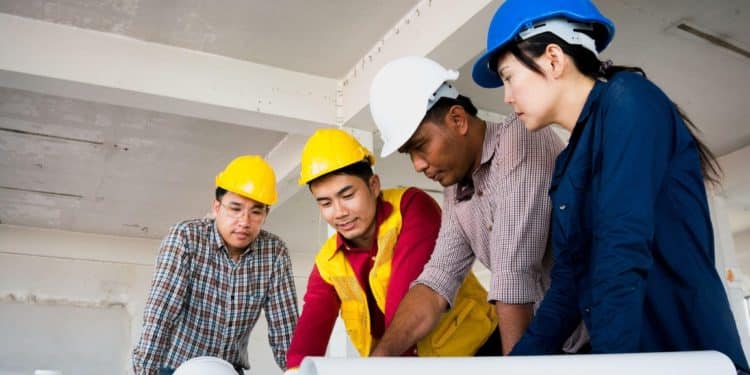Historically, the UK construction industry has been dominated by a homogenous group of workers — white men. But as the country’s population becomes more diverse, the construction sector will need to change to meet the needs of a changing workforce and expand its available talent pool.
There are many reasons why diversity and inclusion are important in construction. For one, a more diverse workforce can help attract new talent to the industry. It can also help with retention, as employees feel more comfortable working in an environment that is inclusive of their backgrounds and experiences.
Improving diversity and inclusion in the workplace can also lead to improved project outcomes. Studies have shown that more diverse teams are better able to solve problems and come up with innovative solutions. For example, a 2015 report by McKinsey & Company, found that organisations in the top quartile for diversity were at least 35% more likely to financially outperform the industry average.
How Key Players Are Seeking to Embed Fairness, Inclusion and Respect (FIR) in Construction
Recognising the importance of making the construction industry more diverse and inclusive, the Supply Chain Sustainability School has partnered with industry stakeholders like CHAS to deliver the Fairness, Inclusion and Respect (FIR) Growth Assessment.
The FIR Growth Assessment is a specialist assessment scheme designed to help businesses in the construction and built environment sector demonstrate their compliance with best practices in diversity and inclusion. Companies can work with assessors like CHAS to audit their FIR maturity — the idea being that fairness, inclusion and respect are key factors in improving workplace diversity and inclusion.
6 Pointers for Construction Companies Looking to Embrace FIR
So how can construction companies improve diversity and inclusion in the workplace? Here are six actionable steps to embed the principles of FIR into your practices.
1. Conduct a Diversity and Inclusion Audit
This is the first step in understanding where your company stands on diversity and inclusion. An audit will help you identify areas where your company can improve.
2. Create a Diversity and Inclusion Policy
A written policy is a commitment to making your workplace more diverse and inclusive. It should outline your company’s commitment to diversity and inclusion and specific actions you will take to promote these values.
3. Educate Employees on Diversity and Inclusion
All employees should be trained on what diversity and inclusion mean and why they are important for the workplace. This training should be ongoing, not just a one-time event.
4. Encourage Employees to Share Their Ideas on Diversity and Inclusion
Your employees are a valuable resource for improving diversity and inclusion in the workplace. Encourage them to share their ideas and experiences with you.
5. Evaluate Your Supplier Relationships
Do your current suppliers reflect the diversity of your workforce? If not, consider diversifying your supplier base. This will not only help you improve diversity and inclusion in your workplace, but it can also lead to cost savings.
6. Celebrate Successes
When you achieve success in making your workplace more diverse and inclusive, be sure to celebrate it! This will help motivate employees to continue working towards these goals.
The case for increased diversity and inclusion in construction is a strong one. By taking these six actionable steps, construction companies can make their workplaces more diverse and inclusive, leading to improved project outcomes, cost savings, and a more talented workforce.













































































